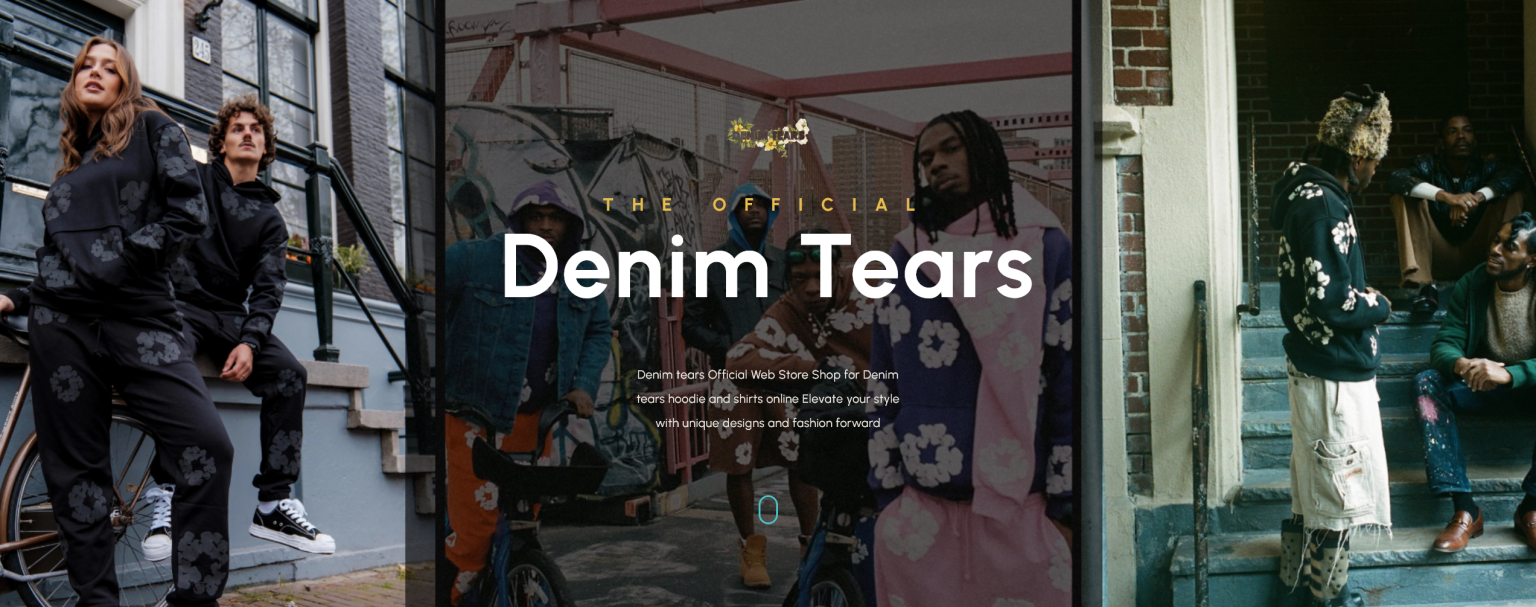Denim Tear: Stitching Hope in the Fabric of a Fractured World
In a world often marked by division, injustice, and pain, art has always served as both a mirror and a balm—reflecting reality while offering the possibility of healing. Among contemporary denim tear cultural movements that speak to this dual power of art, Denim Tears, the fashion brand founded by Tremaine Emory, stands as a profound example of how creativity can confront history, challenge perception, and inspire unity. More than just clothing, Denim Tears is a narrative woven through denim, cotton, and visual storytelling. It speaks to the grief and resilience of the Black experience, and more importantly, it stitches hope into the very fabric of its identity. The Origin of Denim Tears Tremaine Emory launched Denim Tears in 2019, but the seeds of its vision were sown long before. Emory, a cultural figure entrenched in the worlds of art, fashion, and music, had long contemplated the intersections of race, history, and style. His brand’s debut was more than a fashion statement—it was a historical reckoning. The first Denim Tears collection was an exploration of the legacy of slavery in America, using cotton, the very material that enslaved people were forced to harvest, as the central theme. Jeans, sweatshirts, and hats emblazoned with floral cotton wreaths weren’t just stylistic choices; they were elegiac symbols—a call to remember, to honor, and to never forget. In an industry often driven by trend and profit, Emory’s approach was jarringly earnest. Denim Tears wasn’t about selling clothes. It was about using clothes as a language, a protest, and a memorial. The cotton wreath, which has since become a signature emblem of the brand, represents both mourning and growth. It reflects the pain of a past that still echoes today and the possibility of resilience rooted in that very soil. Clothing as Resistance and Reclamation Denim Tears has often been described as a brand that doesn’t just wear Black culture—it is Black culture. Its collections are deeply conceptual, often engaging with narratives of resistance, diaspora, and liberation. This is clothing designed to spark conversation. It calls its wearers and observers to grapple with questions often avoided: What does it mean to be free? Whose stories have we silenced? How can history be worn not as a burden but as a badge of truth? One of the most powerful aspects of Denim Tears is how it reclaims materials and silhouettes that have been historically loaded. Denim and cotton, once symbols of oppression, are transformed into canvases of pride and defiance. A Denim Tears jacket doesn’t just keep you warm—it wraps you in a history that is both painful and empowering. Emory has said that he wants his work to make people feel “seen and heard.” Through thoughtful collaborations with brands like Levi’s and Converse, he has expanded this vision to wider audiences, while maintaining a deeply personal and political core. A Bridge Between Past and Present Denim Tears exists in a liminal space: between fashion and activism, past and present, memory and momentum. It doesn’t shy away from uncomfortable truths, but instead brings them into the spotlight with intention. One striking example was Emory’s collaboration with Levi’s in 2020, which marked the 400-year anniversary of slavery in America. Each garment was stamped with dates, locations, and symbols that told a story of ancestral suffering and strength. Through this, Denim Tears forces us to consider the weight of history not as something locked in textbooks, but as something that lives with us, in our systems, in our streets, and on our skin. The clothes become artifacts—not relics of a bygone era, but tools for contemporary reflection and future action. Healing Through Cultural Expression What makes Denim Tears so potent is not just its ability to look back, but its drive to look forward. Emory is deeply interested in healing—not in the naive sense of forgetting or moving on, but in acknowledging hurt and building from it. His work invites not only Black people but all people to engage in a kind of collective reckoning and rebirth. He is asking us to stitch together a new future from the rips in our shared fabric. That’s why Denim Tears resonates far beyond the runway. It finds a home in music videos, museum exhibitions, social justice campaigns, and streetwear culture. It is worn by everyday people and cultural icons alike, and yet it always speaks with the same quiet, dignified urgency: We are here. We were always here. And we are moving forward with purpose. The Emotional Politics of Style Fashion has always been political, even when it pretends not to be. What we wear sends a message—to ourselves, to our communities, and to those in power. Denim Tears understands this profoundly. It embraces the emotional politics of style, turning garments into declarations of identity and solidarity. Wearing Denim Tears is a way to say, “I care about the past. I believe in justice. I walk with those who came before me.” It’s a radical form of empathy expressed through thread and fabric. In an era where performative activism and commodified culture are rampant, Emory’s work remains unflinchingly authentic. Every stitch speaks. Artistry as Activism Tremaine Emory doesn’t want his work to exist only in a gallery or a lookbook. He wants it to exist on people’s backs, in conversations, in marches, and in music. He brings the sensibility of a fine artist to streetwear, blurring the boundaries between mediums. Each Denim Tears collection is a curated experience, rich with references to literature, visual art, history, and the Black spiritual tradition. Emory’s vision is expansive. He sees Denim Tears not just as a brand, but as a movement—a tool to educate, empower, and inspire. It is fashion not as escapism, but as confrontation. And in that confrontation, it finds possibility. Stitching Hope Perhaps the most beautiful thing about Denim Tears is that, in all its confrontation of pain and injustice, it never forgets about hope. That hope is not blind or easy. It is hard-earned, sewn into each piece with care and purpose. Hope, in the Denim Tears universe, is a practice—a daily decision to remember, to speak, and to build something better. Tremaine Emory once described his brand as “an African American sportswear entity that operates as a platform for stories.” But it’s more Denim Tears Jacket than that. It’s a call to consciousness. It’s an invitation to be part of a larger fabric—one that includes struggle and sorrow, yes, but also joy, resilience, and redemption. In a fractured world, Denim Tears offers us a thread of connection. It teaches us that healing begins with honesty, that beauty can be born of grief, and that even the most broken cloth can be mended—with memory, with meaning, and with love.




Leave a Comment